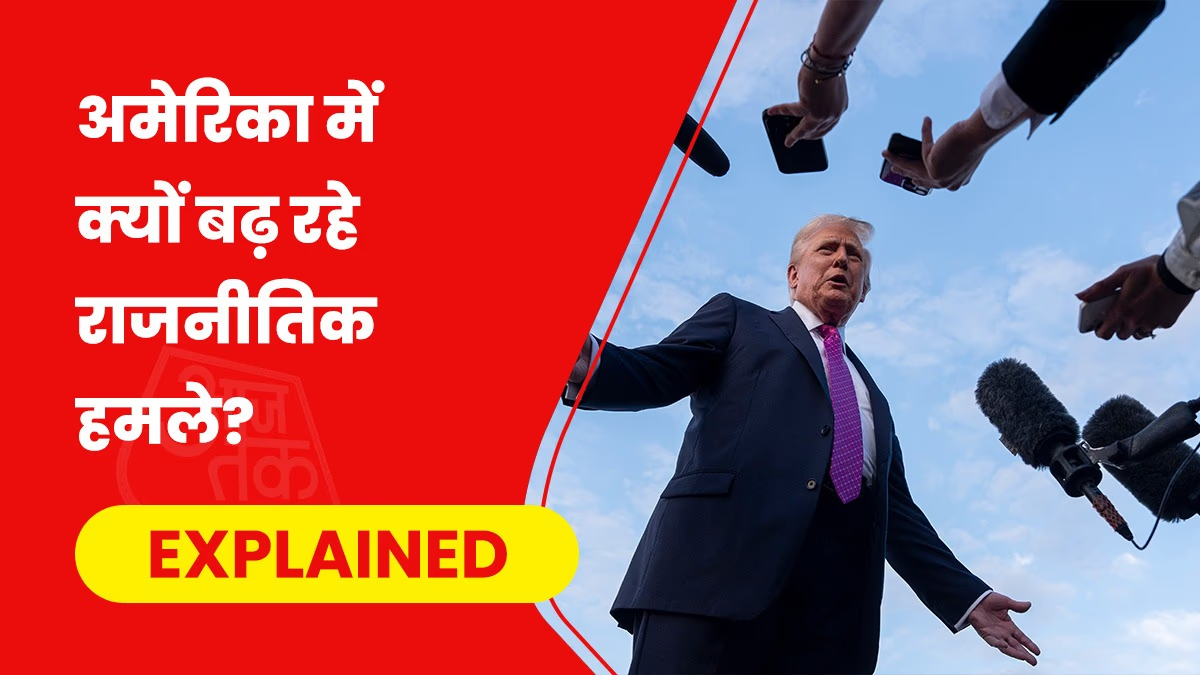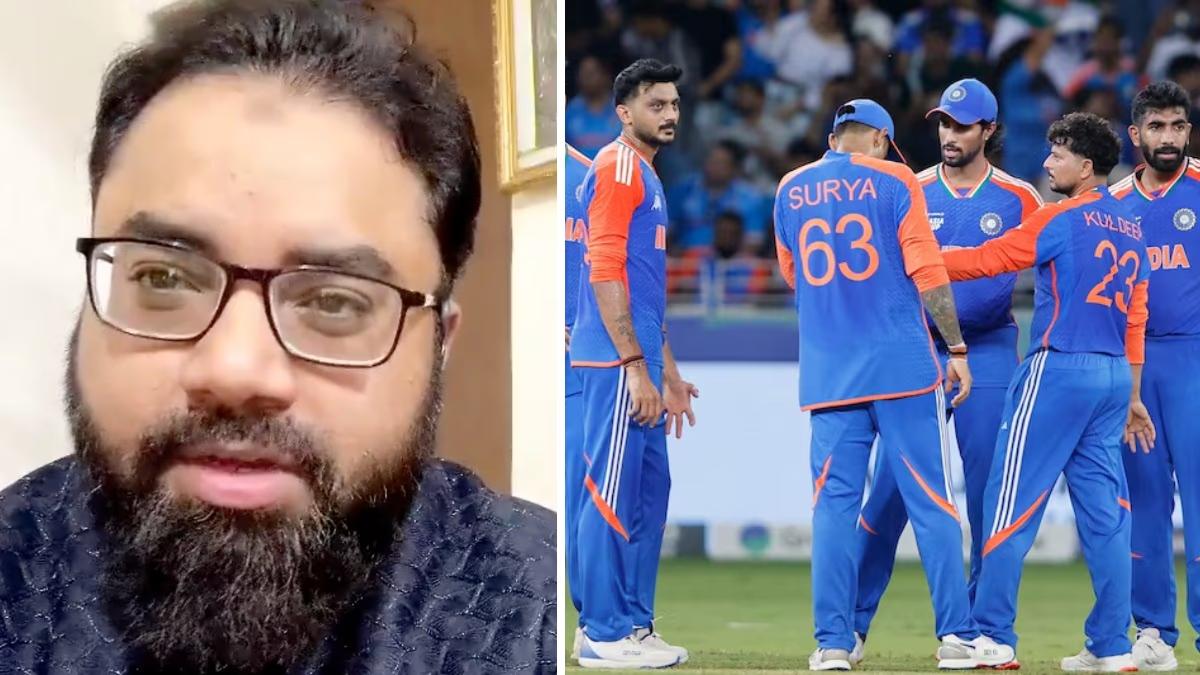The Election Commission announced the assembly election dates for Jammu & Kashmir and Haryana on Friday. Jammu & Kashmir will hold elections in three phases, while Haryana’s 90 seats will be contested in a single phase. Both states' results will be declared on October 4. This marks the first significant battle between BJP and Congress after the Lok Sabha elections, with the two parties facing off once again. Haryana will be the stage for their first direct clash post the Lok Sabha polls.
So, who will emerge victorious in the assembly elections? Will BJP make a hat-trick, or will Congress make a comeback? Every party has its own claims about their performance, but the primary contenders in the electoral field are two major players. In Haryana, the main contesting parties are BJP, Congress, Aam Aadmi Party, JJP, Indian National Lok Dal, and the BSP alliance. Interestingly, AAP and Congress are allies under the INDIA coalition banner in Delhi, but they will contest separately in Haryana.
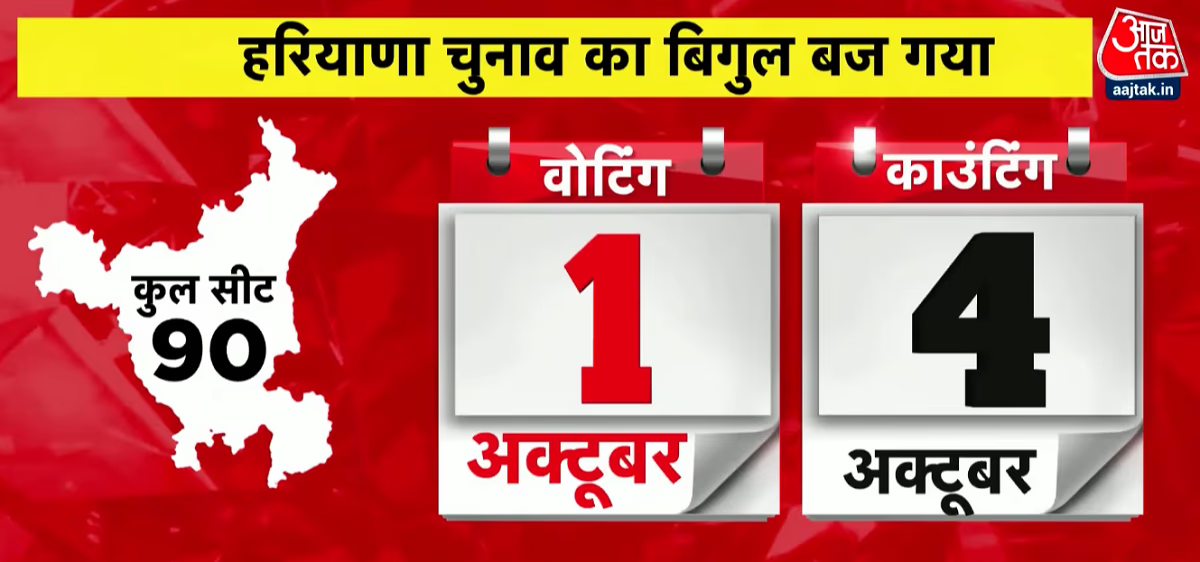
Source: aajtak
Congress Makes a Mark in Lok Sabha
Congress asserts that BJP is set for a defeat in the assembly elections, relying on their Lok Sabha performance. In 2019, Congress didn't win any seats in Haryana, but it secured five seats in the 2024 Lok Sabha elections. Their vote share increased from 28.51% in 2019 to 43.67% in 2024. Simply put, the Lok Sabha election results were evenly split, making the assembly elections challenging for BJP. However, just before the election dates were announced, Chief Minister Nayab Singh Saini unveiled several schemes to appease farmers.

Source: aajtak
Read More:
Key Issues in Haryana Elections
Three major issues dominate the Haryana assembly elections, which have Congress on the offensive and BJP on the defensive. The first issue is the farmers' discontent over MSP. The second issue is the displeasure regarding the Agneepath scheme, and the third issue is the sexual harassment case involving a female wrestler. Despite the repeal of the three agricultural laws, farmers in Haryana and Punjab continue to demand MSP guarantees. Farmers have been protesting on the Haryana-Punjab border for several months. Recently, a group of farmers met with Rahul Gandhi in Parliament, who promised legal guarantees for MSP.
Thus, farmers' issues will be prominent in the state assembly elections. Meanwhile, BJP aims to counter the opposition's narrative through social engineering. To address caste equations, BJP replaced Manohar Lal Khattar with Nayab Singh Saini as the Chief Minister and installed a Brahmin face as the state president. They also brought Kiran Choudhary, a former CM Bansi Lal's daughter-in-law, into the party to appease Jat voters. The question remains whether Kiran Choudhary's entry will soothe the Jat community's displeasure, as BJP's focus is mainly on non-Jat voters.
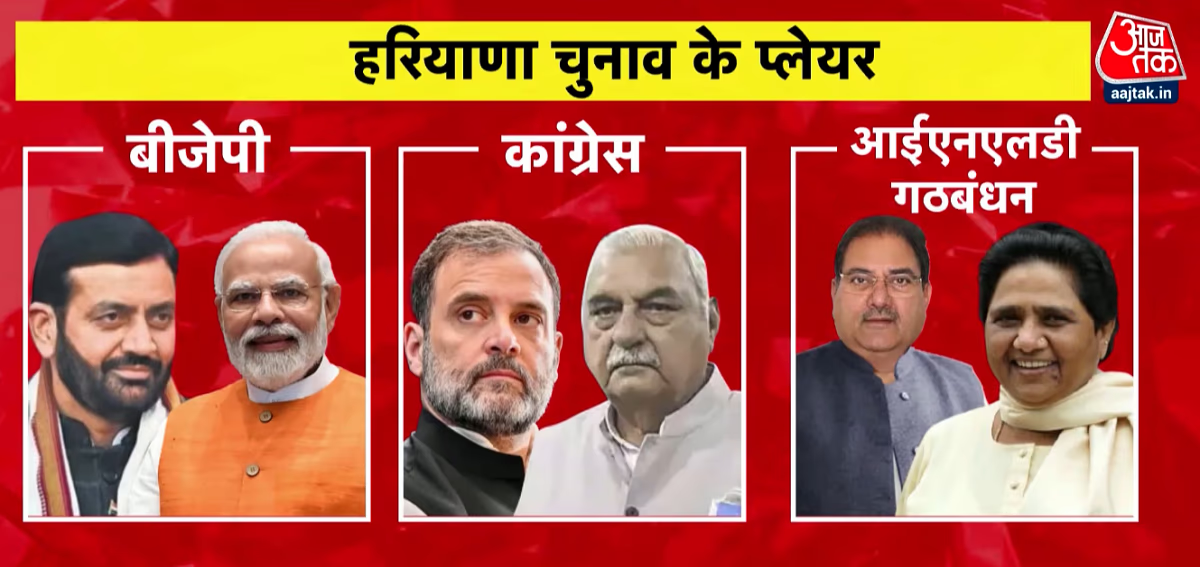
Source: aajtak
Haryana's Caste Dynamics
All parties have formulated social engineering strategies to address Haryana's caste dynamics. BJP focuses on non-Jat voters, Congress on Jat and Dalit voters, while INLD and JJP primarily influence Jat voters. AAP aims to attract all voters. Here’s a breakdown of Haryana's caste composition:
Jats - 22%Dalits - 20%Ahirs - 10%Brahmins - 8%Punjabis - 8%Muslims - 7%Sikhs - 4.9%Rajputs - 4%Gujjars - 2.8%Sainis - 2.5%Vishnois - 2%
Assembly Elections in J&K After 10 Years
Election dates for Jammu & Kashmir have been announced, marking the first assembly elections in the region after 10 years. Voting will be held on September 18, 25, and October 1 across 24, 25, and 40 seats respectively, with results announced on October 4. Following the abrogation of Article 370, J&K's status has changed, becoming a Union Territory, and the number of seats has increased post-delimitation. In 2014, J&K had 87 seats, now expanded to 90. Jammu region's seats have increased from 37 to 43, while Kashmir region’s seats expanded from 46 to 47. Ladakh's 4 seats were integrated into J&K earlier but are now part of a separate UT.
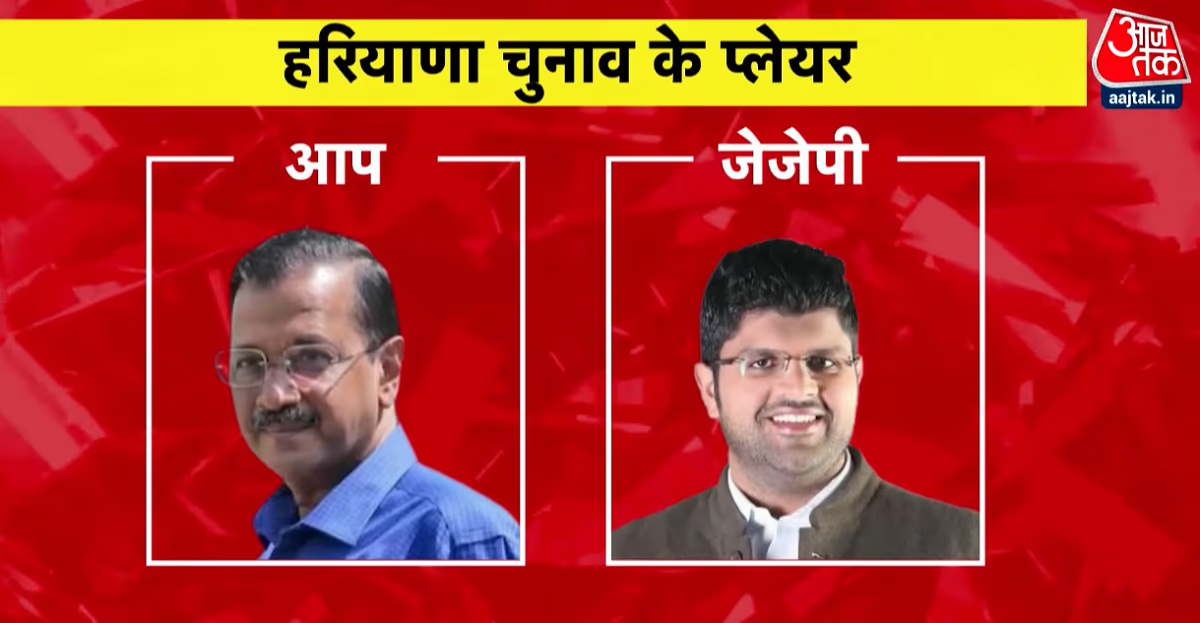
Source: aajtak
Seat Advantage by Party
Last December, the Supreme Court ordered elections to be held by September 30, and they are taking place within that deadline. Post the abrogation of Article 370, the 2024 Lok Sabha elections were held, followed by the announcement of assembly elections. Here’s the seat advantage based on the Lok Sabha elections:
NDA has an advantage in 30 seats, with BJP leading in 29 and the People's Conference in 1. The INDIA alliance leads in 46 seats, with National Conference in 34, Congress in 7, PDP in 5, and Independents in 14. Interestingly, PDP, which formed a coalition government with BJP last time, doesn’t seem to have a strong foothold this time.
On August 5, 2019, the abrogation of Articles 370 and 35A led to significant changes in J&K's political landscape. The region became a Union Territory, and Ladakh became a separate UT. Post-Articles 370's abrogation, National Conference and PDP faced hard times. Yet, to maintain peace in J&K, leaders Mehbooba Mufti and Omar Abdullah were put under house arrest. The situation has since stabilized, and the region is once again preparing for assembly elections post the Lok Sabha polls.
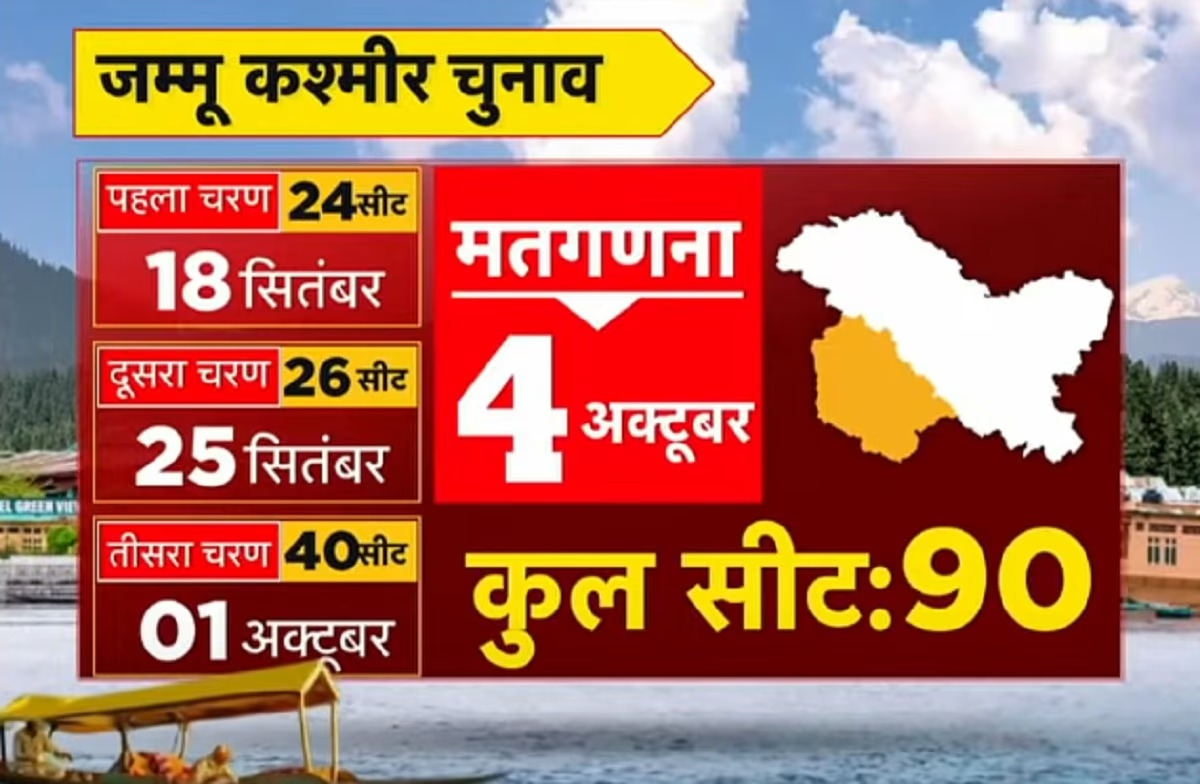
Source: aajtak
Read More:
Seat Breakdown by Phases
- 24 seats voted in the first phase on September 18- 26 seats voted in the second phase on September 25- 40 seats voted in the third phase on October 1- Results for all seats announced on October 4
BJP's Mission Began with PM Modi's J&K Visit
On June 4, following the Lok Sabha election results and his third-time swearing-in as Prime Minister, Narendra Modi visited Jammu & Kashmir. He distributed appointment letters to youths and laid the foundation stone for 84 projects worth INR 1,500 crore and projects worth INR 1,800 crore for the agricultural sector. This visit marked the beginning of BJP’s election mission. Notably, elections are being held in J&K after a decade, with the previous assembly elections conducted in December 2014.
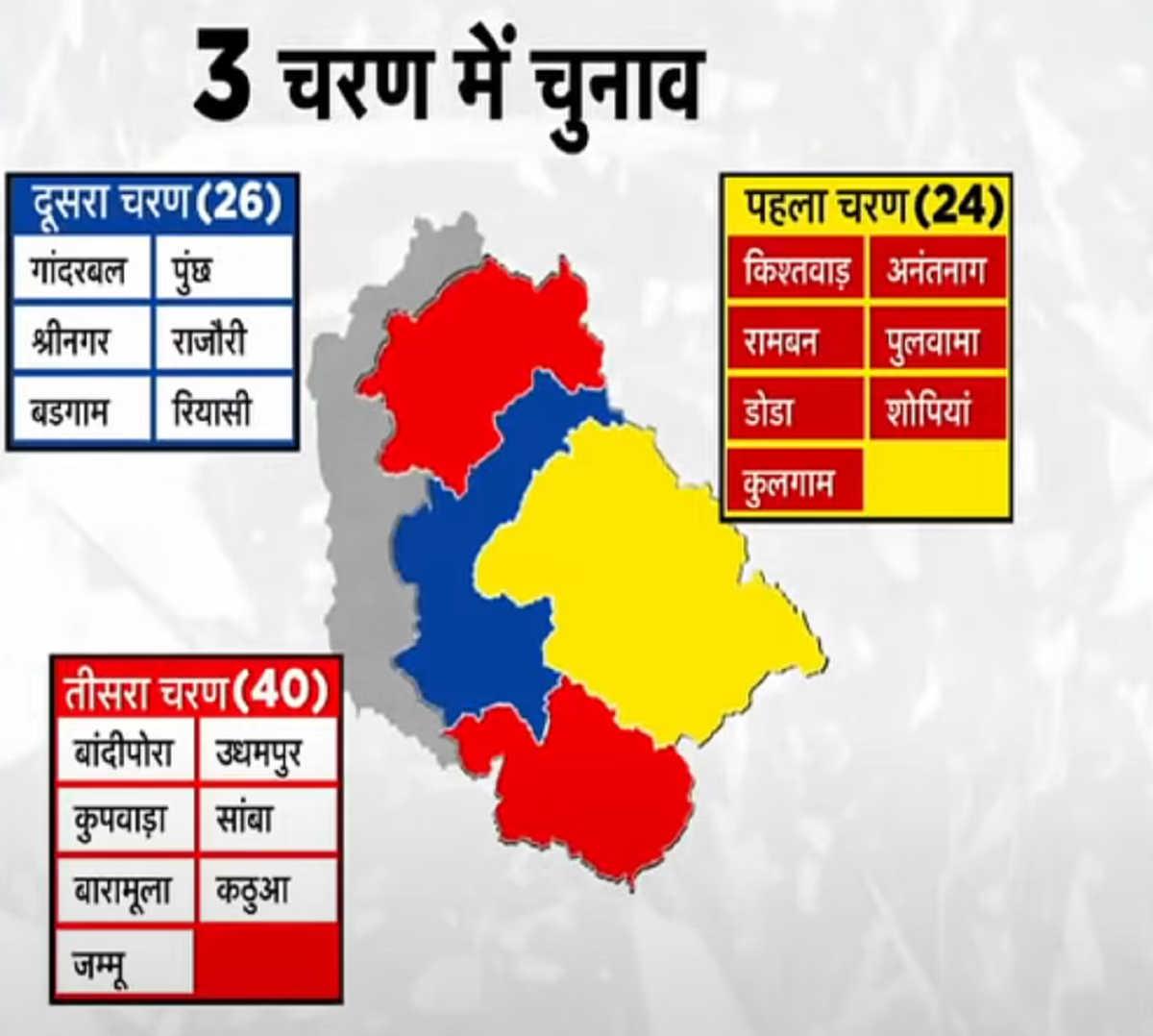
Source: aajtak
The Exciting Electoral Battle in J&K
In March 2015, BJP-formed a coalition government with PDP, with Mufti Mohammad Sayeed as the CM and BJP's Nirmal Singh as the Deputy CM. Sayeed passed away in January 2016, and Mehbooba Mufti became the CM in April 2016. In June 2018, BJP withdrew support from the PDP government, leading to governor's rule in J&K. The assembly was dissolved in November 2018. The abrogation of Articles 370 and 35A on August 5, 2019, transformed J&K, making it a Union Territory, and Ladakh a separate UT. Post-delimitation, J&K’s seats increased from 87 to 90. The upcoming elections will be crucial as BJP has strategized over the past five years, while regional parties in Kashmir are eager to challenge the BJP. Farooq Abdullah has also expressed readiness to become the Chief Minister of J&K.

